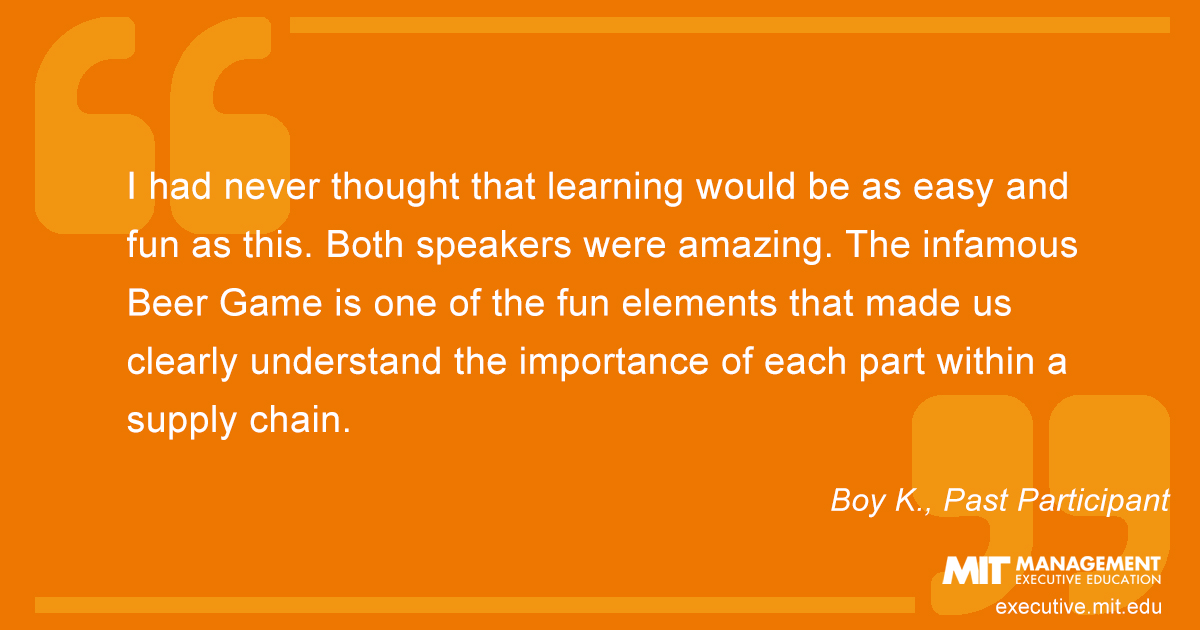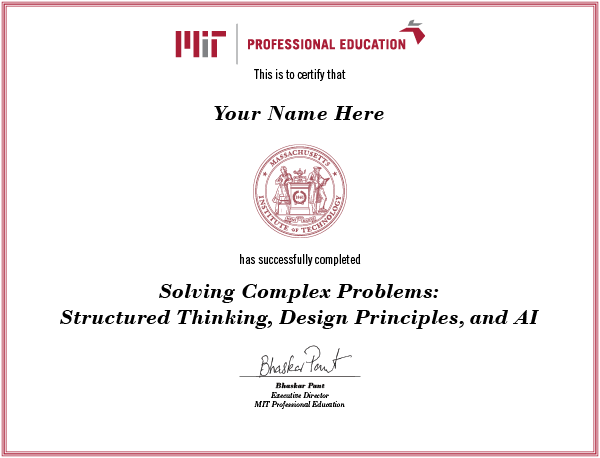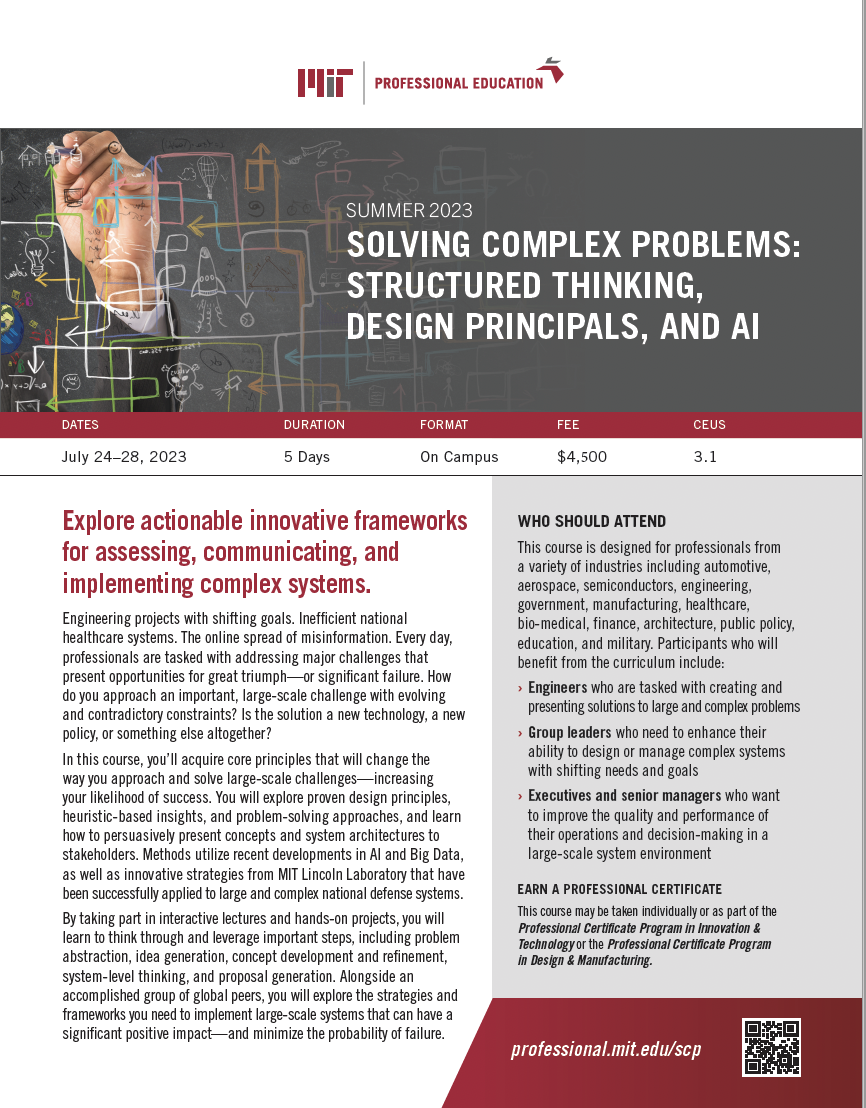
- Community Community
- Product Design Predict Balance Integrate
- Solutions Industries Games iGaming Financial Supply Chain Management Manufacturing Transportation and Infrastructure Energy Healthcare Marketing E-commerce Data Centers Use Cases Premium Games Free-to-Play Gamification Educational Games Tokenomics Design Business Process Management Project Management Strategic Decision Planning Risk Management Asset Management
- Academia Educators Academic Research

- Pricing Pricing Plans Training and Implementation
- Company Contact About Careers Partners Affiliate Program


Understanding Systems Thinking: A Framework for Solving Complex Problems
Unlocking the power of systems thinking: an approach to tackling complexity with machinations.
Every industry today is shaped by a multitude of interconnected elements. From supply chains and business operations to financial systems and user interactions, the complexity can be overwhelming. In such environments, traditional problem-solving methods often fall short. What’s needed is a framework that embraces this complexity rather than attempting to simplify it. This is where Systems Thinking comes into play.
Systems Thinking is a methodology that focuses on understanding the relationships and interactions between different parts of a system, viewing them as a cohesive whole. It offers a way to analyze, visualize, and manage complex problems that span multiple domains and stakeholders. At Machinations, we believe that Systems Thinking is the key to solving these complex challenges , and our platform is designed to help users across industries model, simulate, and optimize the systems they work with.
What is Systems Thinking?
Systems Thinking is about looking at the big picture —understanding how components within a system interact over time to create patterns and behaviors. Unlike traditional approaches that break down problems into isolated parts, Systems Thinking emphasizes the importance of the whole system, recognizing that changes to one component can reverberate throughout the entire network.
This framework is grounded in the study of systems, which can be anything from a company’s workflow to the global economy. It looks at how feedback loops, delays, and non-linear relationships influence system behavior. Feedback loops, in particular, are a cornerstone of Systems Thinking: they can either reinforce change (positive feedback) or counterbalance it ( negative feedback ). By understanding these dynamics, decision-makers can anticipate outcomes, identify bottlenecks, and create more resilient systems.
Machinations and the Systems Thinking Framework
At Machinations, we’ve built a platform that operationalizes the principles of Systems Thinking, providing a powerful tool for professionals across various fields—from finance and healthcare to education and logistics. Our visual modeling system allows users to map, simulate, and optimize the dynamic behavior of systems in their respective industries.
How Machinations brings Systems Thinking to life:
- Modeling Interconnected Systems : Every industry operates on a web of interrelated processes. For example, supply chain management involves coordination between suppliers, manufacturers, distributors, and retailers. With Machinations, you can visualize these connections and interactions, allowing you to map out a system’s structure and analyze how each part influences the rest. This helps users identify points of inefficiency, potential risks, and opportunities for optimization.
- Simulating Real-World Scenarios : Systems Thinking isn’t just about understanding the current state of a system; it’s also about predicting how that system will evolve. Machinations enables users to simulate various “what-if” scenarios, allowing them to anticipate future outcomes based on changes to the system. For instance, financial institutions can model how interest rate fluctuations impact portfolios, while healthcare administrators can simulate the effects of policy changes on patient care. This foresight helps organizations prepare for both expected and unexpected challenges.
- Identifying Feedback Loops : Every complex system contains feedback loops that can either drive growth or hinder progress. For example, in business, customer satisfaction can generate positive feedback, leading to increased sales, while poor service might create negative feedback, eroding brand loyalty. With Machinations, you can easily model and test these feedback loops, understanding their long-term implications and finding ways to either reinforce positive dynamics or mitigate negative ones.
- Visualizing and Communicating Complexity : Systems Thinking helps people grasp the bigger picture, but visualizing complexity can be challenging without the right tools. Machinations provides an intuitive, visual approach, enabling teams to collaborate more effectively by using clear models and diagrams. Whether you’re presenting to stakeholders, team members, or clients, these visual representations make it easier to communicate the intricacies of complex systems.
Applying Systems Thinking and Machinations Across Industries
The need for Systems Thinking is universal. Below are a few examples of how this framework, combined with Machinations, can address the challenges faced by different industries:
- Finance : Financial systems are highly interconnected , with global markets influencing local economies, interest rates affecting investment behaviors, and regulatory changes creating ripple effects throughout the system. By using Machinations to simulate these dynamics, financial analysts and institutions can gain deeper insights into risk management, portfolio optimization, and market prediction.
- Healthcare : Healthcare systems consist of numerous interdependent elements, including patient care, staffing, medical supply chains, and insurance structures. These components are influenced by external factors such as government policies, technological advancements, and public health trends. By adopting a Systems Thinking approach, healthcare administrators can model how changes in one area—like staffing levels—affect patient outcomes and overall efficiency . Simulations through Machinations can help hospitals and organizations optimize resources, improve care, and predict the impact of policy changes.
- Logistics and Supply Chain Management : Global supply chains are among the most complex systems in the modern world. A disruption in one part of the chain, such as a raw material shortage, can trigger cascading effects down the line, impacting production, distribution, and sales. Systems Thinking enables logistics professionals to understand these interdependencies and model potential scenarios. With Machinations, Supply Chain Managers can simulate the impact of various factors such as transportation delays, demand shifts, or trade regulations, allowing them to proactively adjust strategies and minimize disruption.
- Technology and Product Development : In product development, especially in tech industries, systems are made up of research and development, customer feedback loops, production cycles, and market adoption. Systems Thinking helps teams visualize these processes and optimize product life cycles. With Machinations, product managers can model how different features, user behaviors, or market shifts affect the overall product performance, ensuring a more strategic development process.
Systems Thinking is more than a problem-solving method—it’s a way of understanding the complexity and interdependence inherent in modern systems across industries. By adopting this approach, professionals can gain a deeper understanding of the systems they operate within, enabling them to make more informed, resilient, and forward-looking decisions.
At Machinations, we’ve harnessed the power of Systems Thinking to create a platform that is adaptable to any field, empowering users to model, simulate, and optimize their systems with precision. Whether you’re in finance, healthcare, logistics, education, or product development, Machinations offers a flexible and powerful solution to managing the complexity of modern challenges.

Working on content and communites at Machinations, I'm here to help create a cool space in which our members can learn, engage, and discuss anything related to games design and Machinations.
- Courses for Individuals
Understanding and Solving Complex Business Problems

Management and Leadership
Certificate Credits
- Operations
- Systems Thinking
- Participants
Course Highlights
- Discover MIT's unique, powerful, and integrative System Dynamics approach to assess problems that will not go away
- Experience the Beer Game, which simulates the supply chain of the beer industry
- Learn a new way of thinking about and resolving complex, persistent problems that emerge from change
- Earn a certificate of course completion from the MIT Sloan School of Management
Why attend Understanding and Solving Complex Business Problems?
Systems thinking was designed to improve people's ability to manage organizations comprehensively in a volatile global environment. It offers managers a framework for understanding complex situations and the dynamics those situations produce. Systems thinking is a response to the rapid changes in technology, population, and economic activity that are transforming the world, and as a way to deal with the ever-increasing complexity of today's business.
Senior managers can use systems thinking to design policies that lead their organizations to high performance. The program is intended to give participants the tools and confidence to manage organizations with full understanding and solid strategy.
Course experience
This complex problem-solving course introduces participants to MIT's unique, powerful, and integrative System Dynamics approach to assess problems that will not go away and to produce the results they want. Through exercises and simulation models, participants experience the long-term side effects and impacts of decisions and understand the ways in which performance is tied to structures and policies.
Sample Schedule—Subject to Change
This program is designed for executives with decision-making responsibility who are looking for fresh ideas to resolve organizational problems.
Past participants have included
- VPs and EVPs
- Corporate planners and strategists
- Senior Project Managers
- Product Development Managers

Request Course Information
Receive email updates related to this course, including faculty news and additional offering dates.
Review our Privacy Policy.
This program is designed to empower you to analyze complex problems in any area by using powerful yet very simple tools which are also very easy to use in real world, I enjoyed it a lot.
—Jia X.
Enroll Now!
What mit’s beer game teaches about panic hoarding, mit’s ‘beer game’ shows humans are weakest link in supply chains, the beer game, john sterman on system dynamics, how the ‘beer game’ helps retailers solve toilet paper crisis, course offerings.

- Search Search Search …
- Search Search …
Taking a systems thinking approach to problem solving

Systems thinking is an approach that considers a situation or problem holistically and as part of an overall system which is more than the sum of its parts. Taking the big picture perspective, and looking more deeply at underpinnings, systems thinking seeks and offers long-term and fundamental solutions rather than quick fixes and surface change.
Whether in environmental science, organizational change management, or geopolitics, some problems are so large, so complicated and so enduring that it’s hard to know where to begin when seeking a solution.
A systems thinking approach might be the ideal way to tackle essentially systemic problems. Our article sets out the basic concepts and ideas.
What is systems thinking?
Systems thinking is an approach that views an issue or problem as part of a wider, dynamic system. It entails accepting the system as an entity in its own right rather than just the sum of its parts, as well as understanding how individual elements of a system influence one another.
When we consider the concepts of a car, or a human being we are using a systems thinking perspective. A car is not just a collection of nuts, bolts, panels and wheels. A human being is not simply an assembly of bones, muscles, organs and blood.
In a systems thinking approach , as well as the specific issue or problem in question, you must also look at its wider place in an overall system, the nature of relationships between that issue and other elements of the system, and the tensions and synergies that arise from the various elements and their interactions.
The history of systems thinking is itself innately complex, with roots in many important disciplines of the 20th century including biology, computing and data science. As a discipline, systems thinking is still evolving today.
How can systems thinking be applied to problem solving?
A systems thinking approach to problem solving recognizes the problem as part of a wider system and addresses the whole system in any solution rather than just the problem area.
A popular way of applying a systems thinking lens is to examine the issue from multiple perspectives, zooming out from single and visible elements to the bigger and broader picture (e.g. via considering individual events, and then the patterns, structures and mental models which give rise to them).
Systems thinking is best applied in fields where problems and solutions are both high in complexity. There are a number of characteristics that can make an issue particularly compatible with a systems thinking approach :
- The issue has high impact for many people.
- The issue is long-term or chronic rather than a one-off incident.
- There is no obvious solution or answer to the issue and previous attempts to solve it have failed.
- We have a good knowledge of the issue’s environment and history through which we can sensibly place it in a systems context.
If your problem does not have most of these characteristics, systems thinking analysis may not work well in solving it.
Areas where systems thinking is often useful include health, climate change, urban planning, transport or ecology.
What is an example of a systems thinking approach to problem solving?
A tool called the iceberg mode l can be useful in learning to examine issues from a systems thinking perspective. This model frames an issue as an iceberg floating in a wider sea, with one small section above the water and three large sections unseen below.
The very tip of the iceberg, visible above the waterline, shows discrete events or occurrences which are easily seen and understood. For example, successive failures of a political party to win national elections.
Beneath the waterline and invisible, lie deeper and longer-term trends or patterns of behavior. In our example this might be internal fighting in the political party which overshadows and obstructs its public campaigning and weakens its leadership and reputation.
Even deeper under the water we can find underlying causes and supporting structures which underpin the patterns and trends.
For our failing political party, this could mean party rules and processes which encourage internal conflict and division rather than resolving them, and put off the best potential candidates from standing for the party in elections.
The electoral system in the country may also be problematic or unfair, making the party so fearful and defensive against losing its remaining support base, that it has no energy or cash to campaign on a more positive agenda and win new voters.
Mental models
At the very base of the iceberg, deepest under the water, lie the mental models that allow the rest of the iceberg to persist in this shape. These include the assumptions, attitudes, beliefs and motivations which drive the behaviors, patterns and events seen further up in the iceberg.
In this case, this could be the belief amongst senior party figures that they’ve won in the past and can therefore win again someday by repeating old campaigns. Or a widespread attitude amongst activists in all party wings that with the right party leader, all internal problems will melt away and voter preferences will turn overnight.

When is a systems thinking approach not helpful?
If you are looking for a quick answer to a simple question, or an immediate response to a single event, then systems thinking may overcomplicate the process of solving your problem and provide you with more information than is helpful, and in slower time than you need.
For example, if a volcano erupts and the local area needs to be immediately evacuated, applying a thorough systems thinking approach to life in the vicinity of an active volcano is unlikely to result in a more efficient crisis response or save more lives. After the event, systems thinking might be more constructive when considering town rebuilding, local logistics and transport links.
In general, if a problem is short-term, narrow and/or linear, systems thinking may not be the right model of thinking to use.
A final word…
The biggest problems in the real world are rarely simple in nature and expecting a quick and simple solution to something like climate change or cancer would be naive.
If you’d like to know more about applying systems thinking in real life there are many online resources, books and courses you can access, including in specific fields (e.g. FutureLearn’s course on Understanding Systems Thinking in Healthcare ).
Whether you think of it as zooming out to the big picture while retaining a focus on the small, or looking deeper under the water at the full shape of the iceberg, systems thinking can be a powerful tool for finding solutions that recognize the interactions and interdependence of individual elements in the real world.
You may also like

5 Ways to Apply Systems Thinking to Your Business Operations: A Strategic Guide
In today’s fast-paced business world, success depends on the ability to stay agile, resilient, and relevant. This is where systems thinking, an […]

How Systems Thinking Enhances Decision Making Skills: A Quick Guide
In today’s complex world, effective decision-making skills are more important than ever. One powerful approach to enhance these skills is through the […]

Systems Thinking vs. Linear Thinking: Understanding the Key Differences
Systems Thinking and Linear Thinking are two approaches to problem-solving and decision-making that can significantly impact the effectiveness of a given solution. […]

What is Systems Thinking?
There are various approaches to solving problems that require us to analyze and interpret data. However, complex problems can require different perspectives […]

Serving technical professionals globally for over 75 years. Learn more about us.
MIT Professional Education 700 Technology Square Building NE48-200 Cambridge, MA 02139 USA
Accessibility
Solving Complex Problems: Structured Thinking, Design Principles, and AI
Sang-Gook Kim
Download the Course Schedule
How do you solve important, large-scale challenges with evolving and contradictory constraints? In this 5-day course, transform your approach to large-scale problem solving, from multi-stakeholder engineering projects to the online spread of misinformation. Alongside engineers and leaders from diverse industries, you’ll explore actionable innovative frameworks for assessing, communicating, and implementing complex systems—and significantly increase your likelihood of success.
THIS COURSE MAY BE TAKEN INDIVIDUALLY OR AS PART OF THE PROFESSIONAL CERTIFICATE PROGRAM IN INNOVATION & TECHNOLOGY OR THE PROFESSIONAL CERTIFICATE PROGRAM IN DESIGN & MANUFACTURING .
Engineering projects with shifting goals. Inefficient national healthcare systems. The online spread of misinformation. Every day, professionals are tasked with addressing major challenges that present opportunities for great triumph—or significant failure. How do you approach an important, large-scale challenge with evolving and contradictory constraints? Is the solution a new technology, a new policy, or something else altogether? In our new course Solving Complex Problems: Structured Thinking, Design Principles, and AI , you’ll acquire core principles that will change the way you approach and solve large-scale challenges—increasing your likelihood of success. Over the course of five days, you will explore proven design principles, heuristic-based insights, and problem-solving approaches, and learn how to persuasively present concepts and system architectures to stakeholders. Methods utilize recent developments in AI and Big Data, as well as innovative strategies from MIT Lincoln Laboratory that have been successfully applied to large and complex national defense systems. By taking part in interactive lectures and hands-on projects, you will learn to think through and leverage important steps, including problem abstraction, idea generation, concept development and refinement, system-level thinking, and proposal generation. Alongside an accomplished group of global peers, you will explore the strategies and frameworks you need to implement large-scale systems that can have a significant positive impact—and minimize the probability of failure.
Certificate of Completion from MIT Professional Education

- Approach and solve large and complex problems.
- Assess end-to-end processes and associated challenges, in order to significantly increase the likelihood of success in developing more complex systems.
- Implement effective problem-solving techniques, including abstracting the problem, idea generation, concept development and refinement, system-level thinking, and proposal generation.
- Utilize system-level thinking skills to evaluate, refine, down select, and evaluate best ideas and concepts.
- Apply the Axiomatic Design methodology to a broad range of applications in manufacturing, product design, software, and architecture.
- Generate and present proposals that clearly articulate innovative ideas, clarify the limits of current strategies, define potential customers and impact, and outline a success-oriented system development and risk mitigation plan.
- Effectively communicate ideas and persuade others, and provide valuable feedback.
- Confidently develop and execute large-scale system concepts that will drive significant positive impact.
Edwin F. David Head of the Engineering Division, MIT Lincoln Laboratory
Jonathan E. Gans Group Leader of the Systems and Architectures Group, MIT Lincoln Laboratory
Robert T-I. Shin Principal Staff in the Intelligence, Surveillance, and Reconnaissance (ISR) and Tactical Systems Division, MIT Lincoln Laboratory Director, MIT Beaver Works
This course is appropriate for professionals who design or manage complex systems with shifting needs and goals. It is also well suited to those who want to improve the quality and performance of their operations and decision-making in a large-scale system environment. Potential participants include engineers, group leaders, and senior managers in government and industries including automotive, aerospace, semiconductors, engineering, manufacturing, healthcare, bio-medical, finance, architecture, public policy, education, and military.
Computer Requirements
A laptop with PowerPoint is required.


Outside USA: +1‑607‑330‑3200
Framing Complex Problems with Systems Thinking Cornell Course var dateDiv = document.createElement("div"); dateDiv.className = "smaller"; dateDiv.id = "nextCrsWrap"; dateDiv.textContent = "Next course starts November\xa027!"; var $bannerTextInner = document.querySelector("#mainCarousel .banner-text-inner"); if ($bannerTextInner) {//should always be there but just in case $bannerTextInner.appendChild(dateDiv); }
Select start date, framing complex problems with systems thinking, course overview.
Whether you need to tackle a complex project, communicate more effectively, rethink your organization or your job, solve world hunger, or figure out your teenager, systems thinking can help you. All of these are complex and challenging real-world problems, sometimes called wicked problems. We all confront problems, big and small, in our personal and professional lives, and most of us are searching for better ways to solve them. In this course, Professors Derek and Laura Cabrera will demonstrate how we can use systems thinking to solve everyday and wicked problems, to transform our organizations, and to increase our personal effectiveness.
At its core, systems thinking attempts to better align the way we think with how the real world works. Our thinking is based on our mental models, but these models, created from our unique perspective with its inherent biases, are usually inadequate representations of reality. The Cabreras illustrate how we can use feedback to recognize and adapt our mental models so that they better align with reality, enhancing our problem-solving capabilities.
For systems thinking to be successful, it must be adaptive. In this course, you will explore the concept of complex adaptive systems, and while these systems seem unnecessarily complicated, the Cabreras will reveal a surprising discovery. Underlying all complex adaptive systems are simple rules, and applying these rules is the key to transforming the way we frame and solve everyday problems.
Key Course Takeaways
- Identify and describe the problems you want to solve in your personal and professional lives
- Examine the mental models you have and how they differ from reality
- Determine how you can use feedback to improve your mental models
- Recognize the biases that you have that can distort your mental models
- Examine complex adaptive systems and the simple rules that underlie these systems
- Determine how systems thinking is a complex adaptive system
- Explore the four simple rules that underlie systems thinking

Download a Brochure
How it works, course authors.

- Certificates Authored
Laura is Plectica’s Chief Research Officer.
For over 15 years, Laura has conducted translational research to increase public understanding, application, and dissemination of systems science, including for USDA, the National Academy of Sciences Institute of Medicine, HHS, and the Dept. of Justice.
She is also a senior researcher at Cabrera Research Lab, has authored five books on systems thinking and its applications, and is a member of the United States Military Academy at West Point’s Systems Engineering Advisory Board.
Laura holds a PhD in Policy Analysis and Management, a Master’s in Public Administration, and a B.A., all from Cornell.
Her family is her favorite system…
- Digital Leadership
- Intrapreneurship
- Systems Thinking

Derek Cabrera (Ph.D., Cornell) is a systems scientist, Professor, and social entrepreneur and is internationally known for his work in systems thinking, systems leadership, and systems modeling. He is currently a lecturer at Cornell University where he teaches systems thinking and organizational leadership and design. He is senior scientist at Cabrera Research Lab , and co-founder and Chief Science Officer of Plectica . He has given two TED Talks, written and produced a rap song , a children’s book on cognition, and authored numerous book chapters and peer-reviewed journal articles. His research has been profiled in peer-reviewed journals, trade magazines, and popular publications, and he is author of eight books including, Systems Thinking Made Simple: New Hope for Solving Wicked Problems (winner of the 2017 AECT outstanding book award), Thinking at Every Desk: Four Simple Skills to Transform Your Classroom , and Flock Not Clock: Align People, Processes, and Systems to Achieve your Vision . Credited with discovering the underlying rules of systems thinking, Cabrera is co-editor of the Routledge Handbook of Systems Thinking. His work in public schools was documented in the full-length documentary film, RE:Thinking . He was Research Fellow at the Santa Fe Institute (SFI) for the Study of Complex Systems and National Science Foundation IGERT Fellow in Nonlinear Systems in the Department of Theoretical and Applied Mechanics at Cornell University. As a National Science Foundation postdoctoral fellow, he developed new techniques to model systems approaches in the evaluation of Science, Technology, Engineering, and Mathematics (STEM). Cabrera was awarded the Association of American Colleges and Universities’ K. Patricia Cross Future Educational Leaders Award. He serves on the United States Military Academy at West Point’s Systems Engineering Advisory Board. His contributions to the field of systems thinking have been integrated into NSF, NIH, and USDA-NIFA programs, K-12, higher education, NGOs, federal agencies, corporations, and business schools. His systems models are used by many of Silicon Valley’s most innovative companies. Systems Thinking Made Simple is used as an introductory text for undergraduate and graduate students in numerous colleges and universities including Cornell University and West Point Military Academy. Cabrera has developed and patented a suite of systems thinking tools for use in academia, business, and beyond. Prior to becoming a scientist, Cabrera worked for fifteen years around the world as a mountain guide and experiential educator for Outward Bound and other organizations and has climbed many of the world’s highest mountains. He holds a Ph.D. from Cornell University and lives in Ithaca, NY, with his wife, Laura Cabrera, three children, and four dogs.
Who Should Enroll
- Managers, leaders, decision makers, consultants, and anyone responsible for projects, complex processes, and the budgets and people involved with them. Learners will come from every continent and from a diverse range of organizations, including private sector companies large and small, nonprofits, governments, and NGOs.
- For people already interested in systems dynamics or soft systems methodologies, the core principles from this program can be applied to any systems-based models.
Stack To A Certificate
Request information now by completing the form below..
Enter your information to get access to a virtual open house with the eCornell team to get your questions answered live.

COMMENTS
In order to understand systems thinking, a number of concepts should be highlighted in order to define the relation between the problem and the other elements in the system and how to observe this r…
Systems Thinking is more than a problem-solving method—it’s a way of understanding the complexity and interdependence inherent in modern systems across industries. By adopting …
This complex problem-solving course introduces participants to MIT's unique, powerful, and integrative System Dynamics approach to assess problems that will not go away and to produce the results they want.
How can systems thinking be applied to problem solving? A systems thinking approach to problem solving recognizes the problem as part of a wider system and addresses the whole system in any solution rather than just the problem …
In this paper we introduce a systems thinking competency framework and a scenario-based assessment tool that can be used to measure students’ skills in complex …
In our new course Solving Complex Problems: Structured Thinking, Design Principles, and AI, you’ll acquire core principles that will change the way you approach and solve large-scale challenges—increasing your likelihood of …
Whether you need to tackle a complex project, communicate more effectively, rethink your organization or your job, solve world hunger, or figure out your teenager, systems thinking can …